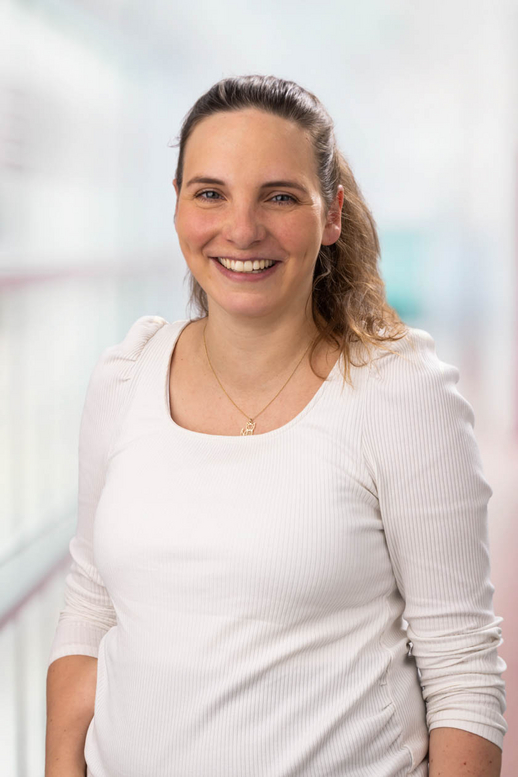Jun. Prof. Dr. Katrin Kierdorf

Contact
University Medical Center, Faculty of Medicine
T +49 761 270 63109
katrin.kierdorf(at)uniklinik-freiburg.de
Further Information
Our research focuses on different aspects of macrophage development and physiological function. Macrophages are long-lived immune cells which can be found throughout all tissues and in nearly all metazoan organisms. They are building a complex network of resident immune cells throughout the tissues which offers a first line of defense against invading pathogens, but also regulate organ function and tissue homeostasis. Within our work we aim to understand different molecular signaling cascades between the host tissues and their macrophages which guide macrophage development and function. We aim to decipher which signals control the early colonization of host organs with macrophages during development. Furthermore, we aim to identify the signals responsible to control macrophage network assembly within the tissues. Finally we would like to understand how macrophages control tissue homeostasis, especially metabolic homeostasis, and which signals send out by macrophages can integrate and regulate the metabolic signaling machinery within the tissues. To pursue our research goals, our team employs a wide range of techniques and models, including the work with transgenic Drosophila, which offers a fantastic genetic tool box to visualize and modify macrophage function.
Keywords:
macrophage, cytokine, metabolism, Drosophila, tissue homeostasis, development
10 selected publications:
- Development of a NanoBRET assay to validate inhibitors of Sirt2-mediated lysine deacetylation and defatty-acylation that block prostate cancer cell migration.
Vogelmann A, Schiedel M, Wössner N, Merz A, Herp D, Hammelmann S, Colcerasa A, Komaniecki G, Hong JY, Sum M, Metzger E, Neuwirt E, Zhang L, Einsle O, Groß O, Schüle R, Lin H, Sippl W and Jung M. (2022)
RSC Chem. Biol. 3 468-485. - Nitroreductase-mediated release of inhibitors of Lysine-Specific Demethylase 1 (LSD1) from prodrugs in transfected acute myeloid leukaemia cells.
Herrlinger E-M#, Hau M#, Redhaber DM, Greve G, Willmann D, Steimle S, Müller M, Lübbert M, Miething CC, Schüle R, and Jung M. (2020).
ChemBioChem 21: 2329-2347. - Structure-reactivity relationships on substrates and inhibitors of the lysine deacylase Sirtuin 2 from Schistosoma mansoni (SmSirt2).
Monaldi D, Rotili D, Lancelot J, Marek M, Lucidi A, Tomaselli D, Ramos-Morales E, Romier C, Pierce RJ, Mai A, and Jung M. J. (2019).
Med. Chem. 62: 8733-8759 - KMT9 mono-methylates histone H4 Lysine 12 and controls proliferation of prostate cancer cells.
Metzger E, Wang S, Urban S, Willmann D, Schmidt A, Offermann A, Allen A, Sum M, Obier N, Cottard F, Ulferts S, Preca B-T, Herrmann B, Maurer J, Greschik H, Hornung V, Einsle O, Perner S, Imhof A, Jung M, and Schüle R. (2019).
Nat. Struct. Mol. Biol. 26: 361–371. - The clinically used iron chelator deferasirox is an inhibitor of epigenetic JumonjiC domain-containing histone demethylases
Roatsch M, Hoffmann I, Abboud MI, Hancock RL, Tarhonskaya H, Hsu K-F, Wilkins SE, Yeh T-L, Lippl K, Serrer K, Moneke I, Ahrens TD, Robaa D, Wenzler S, Barthes NPF, Franz H, Sippl W, Lassmann S, Diederichs S, Schleicher E, Schofield CJ, Kawamura A, Schüle R, and Jung M. (2019).
ACS Chem. Biol. 14: 1737-1750. - Structure-activity studies on N-substituted tranylcypromine derivatives lead to selective inhibitors of lysine specific demethylase 1 (LSD1) and potent inducers of leukemic cell differentiation.
Schulz-Fincke J, Hau M, Barth J, Robaa D, Willmann D, Kürner A, Haas J, Greve G, Haydn T, Fulda S, Lübbert M, Lüdeke S, Berg T, Sippl W, Schüle R and Jung M. (2018).
Eur. J. Med. Chem. 144: 52-67 - Chemically induced degradation of sirtuin 2 (Sirt2) by a proteolysis targeting chimera (PROTAC) based on sirtuin rearranging ligands (SirReals).
Schiedel M, Herp D, Hammelmann S, Swyter S, Lehotzky A, Robaa D, Oláh J, Ovádi J, Sippl W, and Jung M; J. (2018).
Med. Chem. 61: 482-491. - Structure-based Development of a Sirtuin 2 Affinity Probe.
Schiedel M, Rumpf T, Karaman B, Lehotzky A, Gerhardt S, Ovádi J, Sippl W, Einsle O, and Jung M. (2016).
Angew. Chem. Int. Ed. 55: 2252-2256. - Assembly of methylated LSD1 and CHD1 drives AR dependent transcription and translocation.
Metzger E, Willmann D, McMillan J, Forne I, Metzger P, Gerhardt S, Petroll K, von Maessenhausen A, Urban S, Schott A-K, Espejo A, Eberlin A, Wohlwend D, Schüle KM, Schleicher M, Perner S, Bedford MT, Jung M, Dengjel H, Flaig R, Imhof A, Einsle O, Schüle R. (2016).
Nat. Struct. Mol. Biol. 23: 132-139 - Selective Sirt2-inhibition by ligand-induced rearrangement of the active site.
Rumpf T, Schiedel M, Karaman B, Roessler C, North BJ, Lehotzky A, Olah J, Ladwein KI, Schmidtkunz K, Gajer M, Pannek M, Steegborn C, Sinclair DA, Gerhardt S, Ovadi J, Schutkowski M, Sippl W, Einsle O and Jung M. (2015).
Nat. Commun. 6: 6263.



